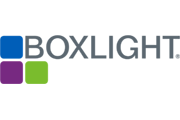
We’re approaching the one-year mark of distance teaching and learning for most of our country’s schools. Last spring when schools closed, teachers had to quickly navigate new and unfamiliar technology so that they could maintain some degree of educational normalcy for their students. Many education-focused companies and organizations developed and facilitated a variety of teacher training courses that centered on software and platforms that districts invested in to deliver lessons to the millions of students now having to school remotely. Courses included learning the basic tools of GSuite for Education or Microsoft Office 365, creating and delivering lessons using specific software and applications (think Zoom), and maneuvering the complexity of all these apps, platforms, and software to deliver lessons that would engage students so that they would show up to live lessons when scheduled. Our nation’s teachers handled what they could (with blood, sweat, and tears) and came out of this unprecedented situation with more education technology knowledge than they had before this.
As districts prepared for starting this school year, the high probability that teachers and students would need to make a quick switch once again to all distance teaching and learning (many schools started with all remote in the fall) was part of professional development planning. The need to improve skills and techniques for facilitating lessons for all-remote or hybrid learning situations was critical. Teachers have certainly amped up their strategies for boosting student engagement and enhancing interactive learning, even without the benefit of being in the same classroom at the same time. But where do we go from here? What more can we share with teachers to help them deliver curriculum effectively and efficiently?
These are exactly the questions that the webinar “Tomorrow’s New Normal: What It Means for Professional Development” will address. This special webinar will address challenges that teachers faced after school closures last spring, such as technology infrastructure, student home environment, teacher working conditions, standards and best practices for virtual teaching and learning, and technology skills. The panel of educators will speak on these challenges, having the knowledge and experience to offer insight into what teachers, education leaders, and administrators can expect. Of special interest for participants will be the discussion of professional development in diverse formats so that teachers are also receiving differentiated instruction that meets their needs.
For more information on this timely webinar, including the panelists and how to register, please click here: Tomorrow’s New Normal: What It Means for Professional Development.


